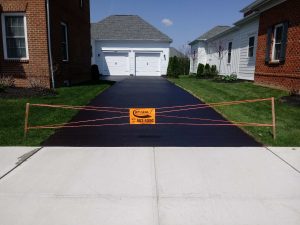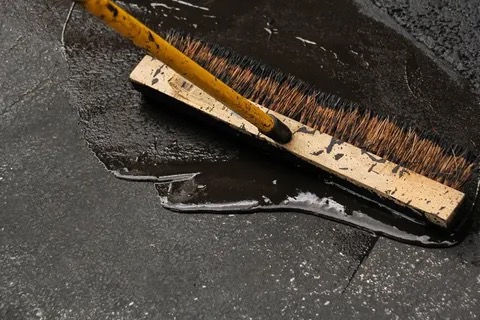Hot Mix Asphalt: A Lasting Service for Sidewalk
Hot Mix Asphalt (HMA) has actually emerged as a leading sustainable selection for pavement services, offering a myriad of innovative innovations and environmental advantages. Its ability to reuse products and lower power consumption offers an engaging instance for its fostering in road building tasks. The long-term efficiency and longevity of HMA make it a recommended alternative for framework development. As the need for green construction practices expands, discovering the subtleties of HMA's sustainability can offer useful insights right into the future of sidewalk remedies.
Environmental Advantages of Hot Mix Asphalt

In Addition, Warm Mix Asphalt helps to alleviate city heat island results. Its dark shade soaks up sunshine, minimizing the quantity of warm mirrored back into the ambience compared to lighter-colored pavements. This can decrease ambient temperatures in city areas, reducing the need for cooling and inevitably reducing energy intake.
Furthermore, Warm Mix Asphalt adds to enhanced stormwater monitoring. Its permeable nature permits water to recharge and infiltrate the pavement groundwater materials, lowering drainage and the risk of flooding. These environmental advantages make Warm Mix Asphalt a sustainable choice for paving roads and highways.
Energy Efficiency in HMA Production
Is power performance a crucial factor in the manufacturing of Hot Mix Asphalt (HMA)? Energy plays a considerable duty in the production of HMA, impacting both price and environmental sustainability. One essential aspect of power effectiveness in HMA production is the usage of warm mix asphalt (WMA) modern technologies.
Furthermore, improvements in plant modern technologies have actually led to even more energy-efficient HMA manufacturing processes. By enhancing power usage in HMA manufacturing, the market can reduce its carbon footprint while keeping top quality sidewalk products.
Recyclability of Warm Mix Asphalt
The recyclability of Warm Mix Asphalt (HMA) is a critical facet of its sustainability and long-term environmental influence. HMA is among one of the most recycled materials in the United States, with over 100 million heaps of reclaimed asphalt sidewalk (RAP) being reused annually in new pavement building and construction. Reusing HMA supplies numerous environmental advantages, such as lowering the need for virgin products, lowering energy usage during production, and reducing the amount of waste sent out to land fills.
The procedure of reusing HMA entails milling the existing pavement, crushing it right into smaller sized items, and blending it with brand-new aggregate and asphalt binder to produce a recycled mix. This recycled mix can often carry out as well as or even better than standard HMA, while requiring fewer raw materials and producing reduced greenhouse gas discharges. By including RAP right into brand-new sidewalk jobs, roadway firms can preserve all-natural sources, lower prices, and lessen the look at more info environmental footprint of road building and maintenance activities. In general, the recyclability of HMA plays a substantial role in advertising lasting methods within the sidewalk industry.

Long-Term Performance of HMA
Asphalt sidewalks show longevity and durability over an extensive period, showing the long-term performance of Warm Mix Asphalt (HMA) The longevity of HMA can be credited to its capability to withstand rush hour tons, extreme weather, and the impacts of aging. Studies have revealed that well-designed and properly built HMA sidewalks can last for two decades or even more with routine upkeep. The secret to making the most of the lasting efficiency of HMA lies in using high-quality products, complying with finest practices in building, and executing efficient maintenance approaches. go to these guys Correct water drainage, routine evaluations, and timely repairs are necessary for preserving the architectural stability of HMA pavements gradually. In addition, innovations in HMA innovation, such as the use of polymer-modified binders and cozy mix asphalt, have even more improved the sturdiness and longevity of HMA pavements. By prioritizing high quality construction and upkeep methods, HMA remains to prove itself as a lasting and cost-efficient remedy for resilient sidewalk infrastructure.

HMA: Sturdiness and Sustainability
Demonstrating both resilience and sustainability, Hot Mix Asphalt (HMA) has ended up being a keystone in the building of resilient sidewalk frameworks - commercial parking lot paving. HMA's toughness comes from its capacity to withstand heavy tons, severe weather condition problems, and high website traffic quantities, making it a trusted selection for roads, freeways, and airport terminal runways. The structure of HMA, which typically consists of aggregates, binder, and filler, plays a vital function in improving its durability and resistance to tear and wear
Moreover, HMA's sustainability exists in its recyclability and energy-efficient manufacturing procedure. The capability to recycle recovered asphalt sidewalk (RAP) in new HMA mixtures decreases the need for virgin materials and minimizes the ecological influence of sidewalk building and upkeep. In addition, the power effectiveness of creating HMA depends on its reduced blending temperatures compared to other pavement materials, leading to decreased energy usage and greenhouse gas exhausts.
Verdict
In verdict, warm mix asphalt (HMA) uses a sustainable service for pavement with its ecologically pleasant features. HMA's recyclability, energy efficiency in manufacturing, and lasting longevity make it a green option for roadway construction. By conserving natural sources, lowering waste, and reducing greenhouse gas emissions, HMA my blog plays an essential duty in advertising sustainability in infrastructure advancement. Its capacity to alleviate metropolitan warmth island impacts better underscores its value in creating resistant and environmentally mindful sidewalk systems.
HMA is one of the most recycled products in the United States, with over 100 million heaps of redeemed asphalt pavement (RAP) being recycled every year in new pavement construction.The process of recycling HMA entails grating the existing pavement, crushing it right into smaller sized pieces, and blending it with brand-new accumulation and asphalt binder to create a recycled mix.Asphalt sidewalks demonstrate durability and resilience over a prolonged duration, reflecting the lasting performance of Hot Mix Asphalt (HMA) Additionally, advancements in HMA innovation, such as the use of polymer-modified binders and warm mix asphalt, have better enhanced the longevity and longevity of HMA sidewalks. The ability to recycle recovered asphalt sidewalk (RAP) in new HMA mixtures minimizes the need for virgin products and reduces the environmental influence of sidewalk building and construction and upkeep.
Comments on “Raise Security and Charm: Angled Parking Area Solutions with Asphalt Sealing”